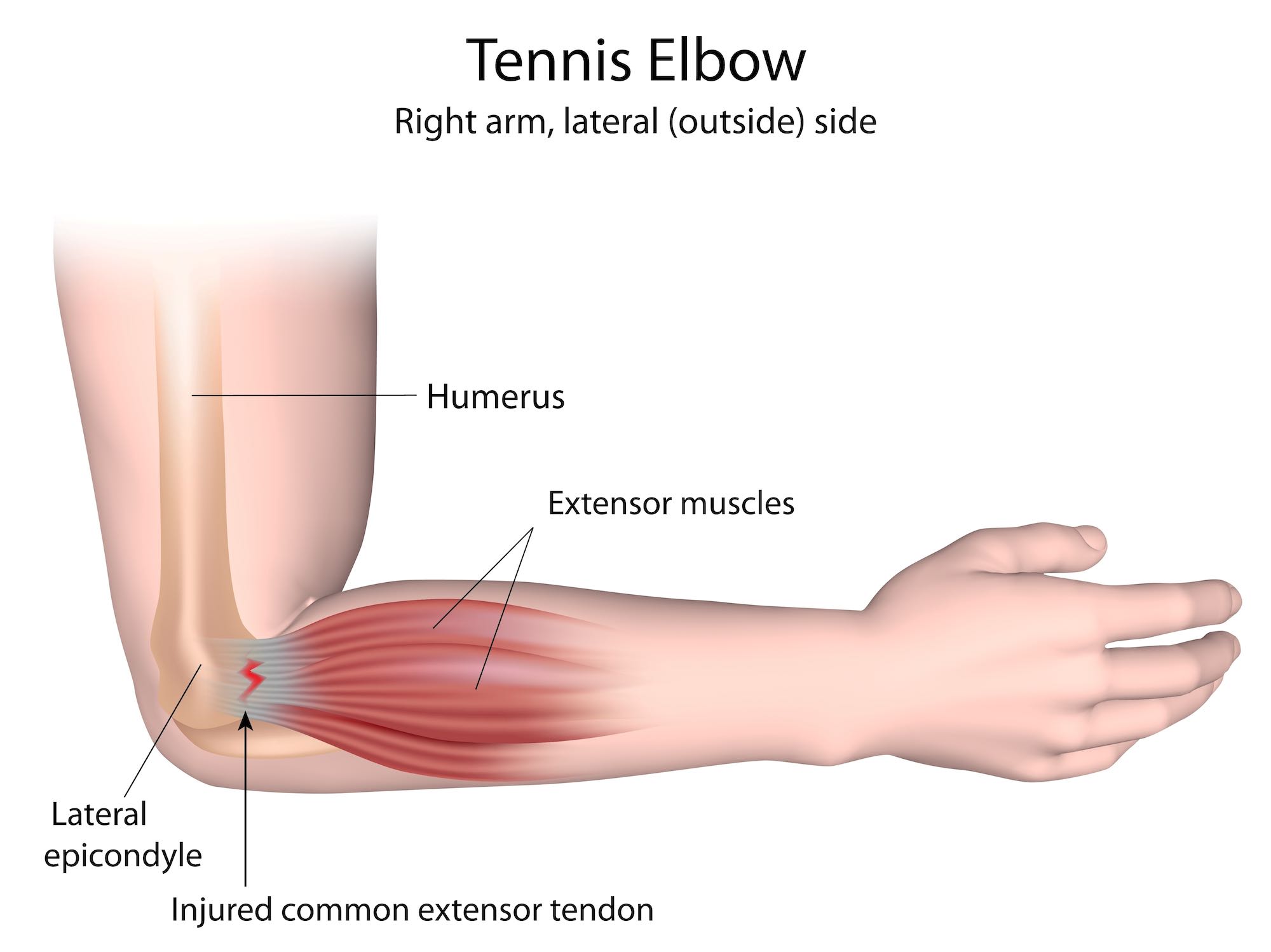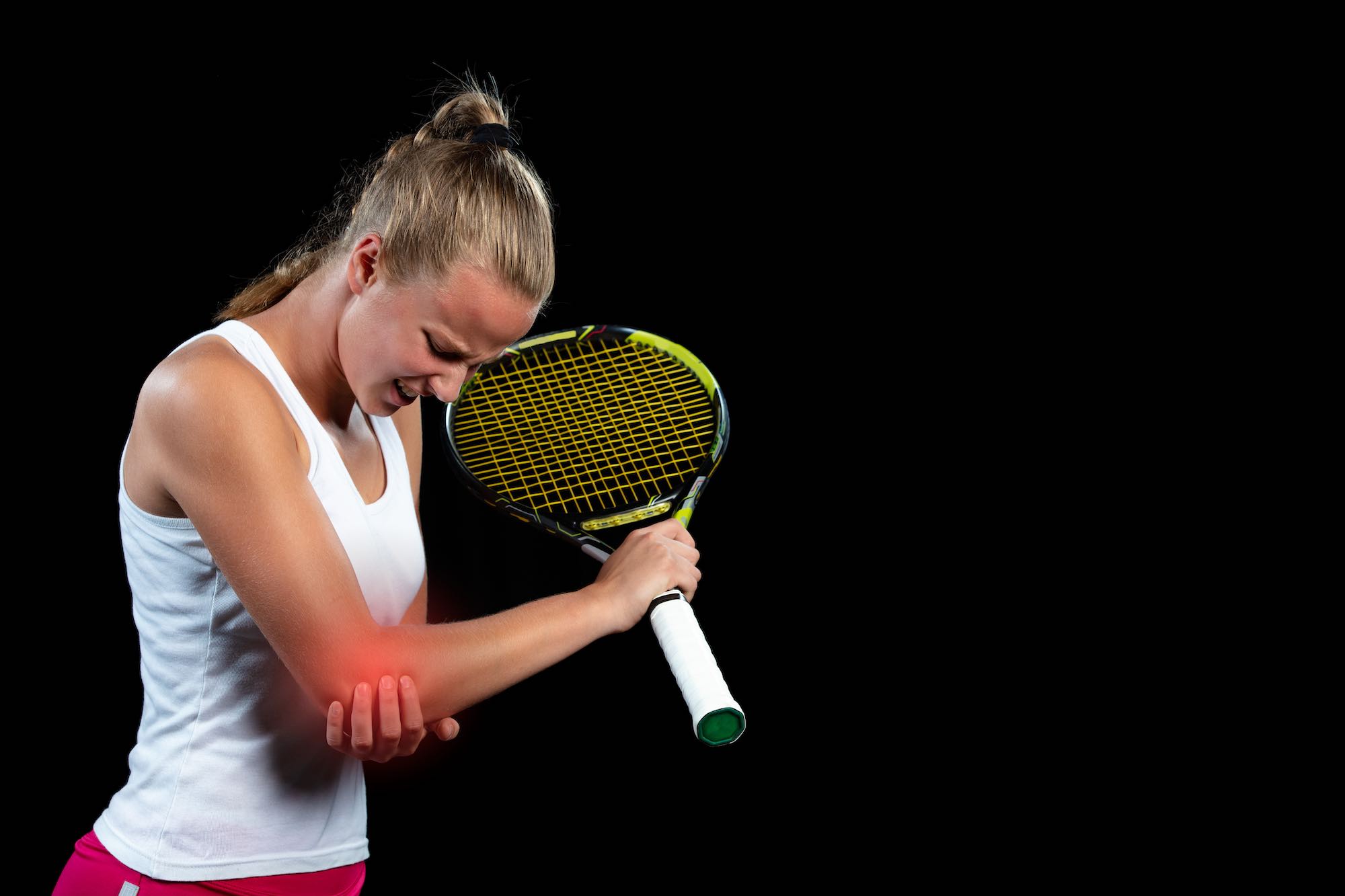What Is Tennis Elbow?
Tennis elbow, or Lateral epicondylitis, is a painful condition that occurs in and around tendons that become inflamed in response to overuse. It originates on the outer side of the elbow at a place called the lateral epicondyle.

What Causes Tennis Elbow?
The overused and inflamed tendon causing tennis elbow can be the result of micro tears of a tendon that originates on the outside of the elbow and is responsible for assisting in wrist extension. This is a tendon injury that generally does not require repair of the tendon, but rather observation and natural healing or possible surgical debridement if all nonoperative treatment options fail.
What Are Some Symptoms of Tennis Elbow?
Tennis elbow presents as pain on the outside part of the elbow that occurs with reaching and lifting activities, in addition to wrist extension activities (such as the movement of the hand backwards towards the top side of the forearm,) more than wrist flexion activities (or the act of bending your hand down at the wrist.)
What Does Tennis Elbow Pain Feel Like?
Tennis elbow pain can present in different ways:
It may present as sharp/acute pain when it is activity related (i.e. reaching, catching, lifting, etc.)
Tennis elbow pain can also present as a dull ache and/or throbbing that is present on the outside of the elbow at all times. The ache can be felt especially with reaching activities or activities that require repetitive wrist extension.
How Long Does Tennis Elbow Last?
Tennis elbow can last up to 18 months before it improves with no intervention.
There are treatment measures such as activity modifications, physical therapy or corticosteroid injections to help decrease the severity of symptoms as healing takes place.
Should Ice or Heat Be Used for Treatment of Tennis Elbow Pain?
Alternating ice and heat can both be used to treat tennis elbow pain.
Heat will facilitate motion and muscle relaxation, while ice acts as an anti-inflammatory. Alternating between the two can provide pain relief.
Does Therapeutic Kinesiology Tape (KT) Work to Heal Tennis Elbow?
While there is no scientific evidence to prove that K-tape can help heal tennis elbow, when placed in a proper position, K-tape could potentially help relieve pain by minimizing the pressure load where the tendon is most commonly being stressed.
What Is Involved in Tennis Elbow Rehabilitation?
Depending on the severity of the tennis elbow, treatment and rehabilitation options can vary:
Conservative treatments can include:
- Observation
- Activity modifications
- Oral anti-inflammatory medications
- Formal courses of physical therapy involving strengthening and stretching exercises
- Prescribed home exercises
If non-invasive treatment options fail to provide relief, corticosteroid injections are an alternate option, though they are not recommended as a definitive means of treatment.
If non-operative interventions fail to provide relief, other treatment/rehabilitation options include:
- Plasma-rich protein (PRP) injections
- Surgery
What Is the Surgical Procedure for Tennis Elbow?
Surgery is only recommended as a treatment for tennis elbow if all other rehabilitation options have failed to provide healing and/or pain relief.
For this procedure, an incision is made directly at the site of the pain on the lateral aspect of the elbow and the injured portion of the tendon is excised and the underlying bone is drilled to create a bleeding surface that promotes healing of the remaining tendon to bone. Post-operative recovery includes two weeks of casting and an additional four or more weeks of splinting, with a course of formal therapy of 6-8 weeks
What Is Tennis Elbow Surgery Recovery Like?
Tennis elbow surgery generally requires a two to three month recovery time, with restrictions on lifting, pushing, pulling, or gripping. This is accompanied by a period of rehabilitation and therapy to aid in regaining range of motion and strength.
What Is the Difference Between Tennis Elbow vs. Golfers’ Elbow?
Tennis elbow (lateral epicondylitis) is pain on the outer side of the elbow.
Golfers’ elbow (medial epicondylitis) is pain on the inner side of the elbow, at or near the funny bone nerve (the ulnar nerve).
Neither playing tennis or golf are necessary to develop the symptoms of tennis or golfers’ elbow, and some patients may experience both conditions simultaneously.
With tennis elbow, most of the aggravating symptoms occur with wrist extension activities, whereas with golfers’ elbow, most of the aggravating symptoms occur with wrist flexion activities. The treatment and rehabilitation options for both conditions are similar.

